“International Noise Awareness Day” is held annually to draw attention to the important issue of noise protection. Noise damages our ears and ultimately our well-being, too. Noise-induced hearing loss has long been one of the most common occupational illnesses – our aim is to help prevent it by offering you hearing protection products with which you can protect yourself against noise.
Noise as a stress factor – the impact of noise on health
Noise not only impairs concentration and may cause noise-induced hearing loss, it’s also a stress factor for the whole body. Noise can lead to changes in biological risk factors such as blood lipids, blood sugar and blood clotting factors. Cardiovascular diseases such as high blood pressure and certain heart conditions – including heart attacks – may also be caused by noise.
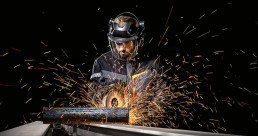
Noise-induced hearing loss – the most common occupational illness
Everyone perceives noise differently. It is extremely difficult to judge whether a noise is merely unpleasant or is actually affecting your health. Although the threshold of pain is about 120 dB(A), hearing damage can occur at much lower noise levels.
To ensure good hearing in your old age, it is important to protect it when you are younger. Hearing protection in the workplace is regulated in Germany by the Noise and Vibrations Occupational Safety and Health Ordinance. This states that at noise exposure levels of 80 dB(A) or above and a peak sound pressure level of 135 dB(C), employers must inform employees of the noise hazards and provide suitable hearing protection.
At noise levels of 85 dB(A) or 137 dB(C) and above, it is compulsory for employees to wear hearing protection.
With noise-induced hearing loss, the ability to hear higher frequencies is first to be affected, followed later by mid and low frequencies. Read more about noise-induced hearing loss in our informative blog article.
International Noise Awareness Day focuses on how to prevent noise-induced hearing loss in a wide range of working environments.
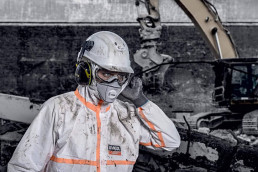
Sources of noise – noise in the workplace
Sources of noise are not only found in production facilities or factories with large machines. Even in supposedly safe office workplaces, noise as a stress factor is a common problem.
Many work processes involve communicating with each other, but this can also cause stress and illness. The more people sitting in an office, the louder it becomes – especially in landscape and open-plan offices. Typical sources of noise here include conversations between employees, office equipment such as printers and photocopiers, telephone conversations and road noise. Office noise not only causes hearing damage, it can also result in relatively high levels of stress and strain. This has a negative effect on concentration, productivity, alertness and reaction time.
Technical and organisational measures – e.g. sufficient space between workstations to reduce office noise – can help. Organisational measures are generally no longer effective against sources of noise louder than 85 dB(A). In these cases, the Noise and Vibrations Occupational Safety and Health Ordinance, which makes the wearing of hearing protection compulsory, applies. uvex offers the right hearing protection for a wide range of working environments.
International Noise Awareness Day addresses these challenges and offers solutions for reducing noise in both the professional and private sphere.
uvex hearing protection: earmuffs, earplugs & otoplastics
Finding the right hearing protection is very important. First, a noise analysis should be carried out to determine the source of the noise.
Would you like to find out how loud your environment is? You can test noise levels with our uvex Dezibel app. This is not a validated, verified measurement. The app simply gives an indication of noise levels and is intended for personal use. A measurement by the app does not replace a noise emission measurement or a workplace assessment.
In addition to the noise analysis, the duration of the noise, compatibility with other PPE products and wearability also play an important role in selecting the right hearing protection.
The various types of hearing protection available, including hearing protection earplugs, earmuffs and otoplastics, mean that there is something to suit everyone.
Hearing protection earplugs
These are single-use or reusable earplugs, which are particularly suitable for longer periods of wear. They can also be used in conjunction with other PPE products and are therefore the perfect addition to your personal protective equipment. Earplugs are also the best choice for working environments with high temperatures.
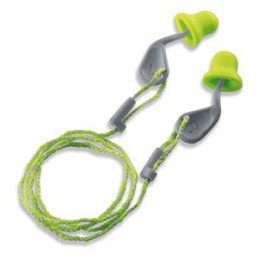
Earmuffs
This type of hearing protection comes with a headband and fits over the head. Earmuffs can also be attached to an industrial safety helmet. They are quick and easy to use, and fit most users as they do not need to be moulded precisely to the anatomy of the ear canal. They are also ideal for wearers who switch between different activities. For people with pressure-sensitive ear canals, earmuffs are the perfect alternative to hearing protection earplugs.
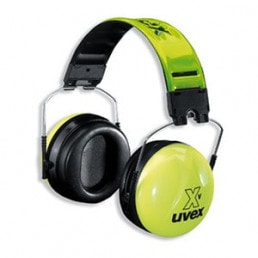
Otoplastics
Otoplastics are a type of custom-fitted hearing protection. They are made to measure using an impression of the ear canal. Depending on the model, the desired noise protection is provided by a universal or adjustable filter. Find out more about otoplastics in our blog article “Custom-fitted hearing protection otoplastics with active noise cancelling – technical innovations in noise protection”. Read our blog article “Custom-fitted hearing protection – who pays? Covering the costs of customised otoplastics at work” to find out who will cover the cost of your otoplastics.
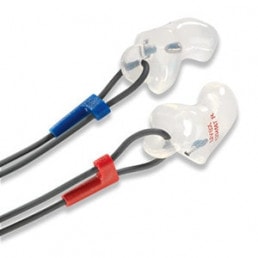
International Noise Awareness Day 2021
28 April 2021 was the 24th International Noise Awareness Day. In Germany, free online talks reflecting the event’s motto of “Still too loud!?” were held on this day as part of the International Year of Sound 2020+. Topics included “Will e-drives save the acoustic urban climate?”, “Sound quality for electric vehicles”, “Construction noise – current situation and potential for reduction” and “Developing quiet products for the urban environment”. Further information on International Noise Awareness Day.
Would you like to learn more about noise protection and the anatomy of the ear? Check out our blog articles “Noise is irritating – and a danger to your health!” and “The structure of the ear – and how hearing actually works”. You too can help to prevent noise in the workplace and protect yourself and your employees from noise-induced hearing loss. We’re happy to advise you on the right uvex hearing protection for your workplace.